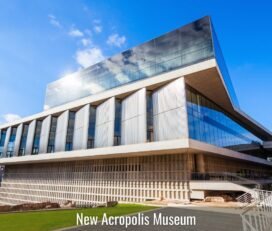Introduction
Aristotle’s Lyceum, situated in the vibrant heart of Athens, Greece, is a historic landmark that provides an insight into the ancient realm of philosophy. This archaeological site is essential for anyone fascinated by history, philosophy, and Greece’s rich cultural legacy. Once a prestigious school of thought, the Lyceum now stands as a monument to the intellectual endeavors of the past.
History
Established in 335 BCE by the renowned philosopher Aristotle, the Lyceum served as a Peripatetic school where he imparted knowledge to his students for twelve years. Originally, the site featured a temple dedicated to Apollo Lyceus and later evolved into an ancient gymnasium and civic hub. It was within these grounds that Aristotle, along with other prominent philosophers such as Isocrates and Plato, shared their teachings. The Lyceum significantly contributed to the evolution of Western philosophy and was a vital center of education in ancient Athens.
How to Get There
The Lyceum of Aristotle is conveniently located near the Byzantine and Christian Museum in the Kolonaki district of Athens. It is easily reachable on foot and is in close proximity to the Syntagma and Evangelismos metro stations. For those who prefer to drive, there are pay parking lots available nearby.
Things to See
- Ruins of the Baths: The site showcases remnants of ancient baths, complete with their original heating systems, highlighting the advanced engineering of the era.
- Teaching Room: This area served as the venue for Aristotle and other philosophers’ lectures, offering insight into the educational methods of ancient Greece.
- Library: Once the largest library of its time, the Lyceum’s library was a center of knowledge, housing an extensive collection of texts and manuscripts.
- Gymnasium: As one of the three oldest gymnasiums in Athens, the Lyceum’s gymnasium was crucial for physical education and athletic training.
- Portico: The portico, where the Peripatetics would walk, provides a tranquil atmosphere reminiscent of Aristotle’s fondness for walking and contemplation.
- Ancient Infrastructure: The site includes remnants of ancient piping used for heating the baths, offering a glimpse into the sophisticated infrastructure of the time.
Ticket Information
- Entrance Fee: The entrance fee is 4 euros during the high season (April to October) and 2 euros in the low season (November to March).
- Combo Ticket: A combo ticket that grants access to the Lyceum, the Acropolis, and six other archaeological sites in Athens is available for 30 euros. This ticket is valid for five days and can be purchased online or on-site.
- Free Entry: Admission is free for Europeans under 25 years old, with reduced prices for retirees and students from outside the EU.
Tips for Visiting
- Plan Your Visit: The site is open daily from 8 AM to 8 PM in summer, with shorter hours in the fall and winter. It is closed on January 1, March 25, May 1, Orthodox Easter Sunday, and December 25 and 26.
- Explore the Grounds: Take your time to stroll through the well-kept paths and investigate the various ruins, including the baths and library.
- Relax in the Gardens: The serene atmosphere of the gardens, filled with rosemary, lavender, oregano, and thyme, is ideal for reflection and contemplation.
- Combine with Other Sites: Consider purchasing the combo ticket to visit other significant archaeological sites in Athens, such as the Acropolis and the Temple of Olympian Zeus.
- Respect the Site: Be mindful of the historical importance of the site and adhere to any restrictions or guidelines provided by the site staff.
Conclusion
A visit to Aristotle’s Lyceum is a rewarding experience that offers a unique perspective on the intellectual and cultural heritage of ancient Greece. Whether you are a history enthusiast, a philosophy lover, or simply someone eager to explore Greece’s rich cultural landscape, this site is an essential destination.








